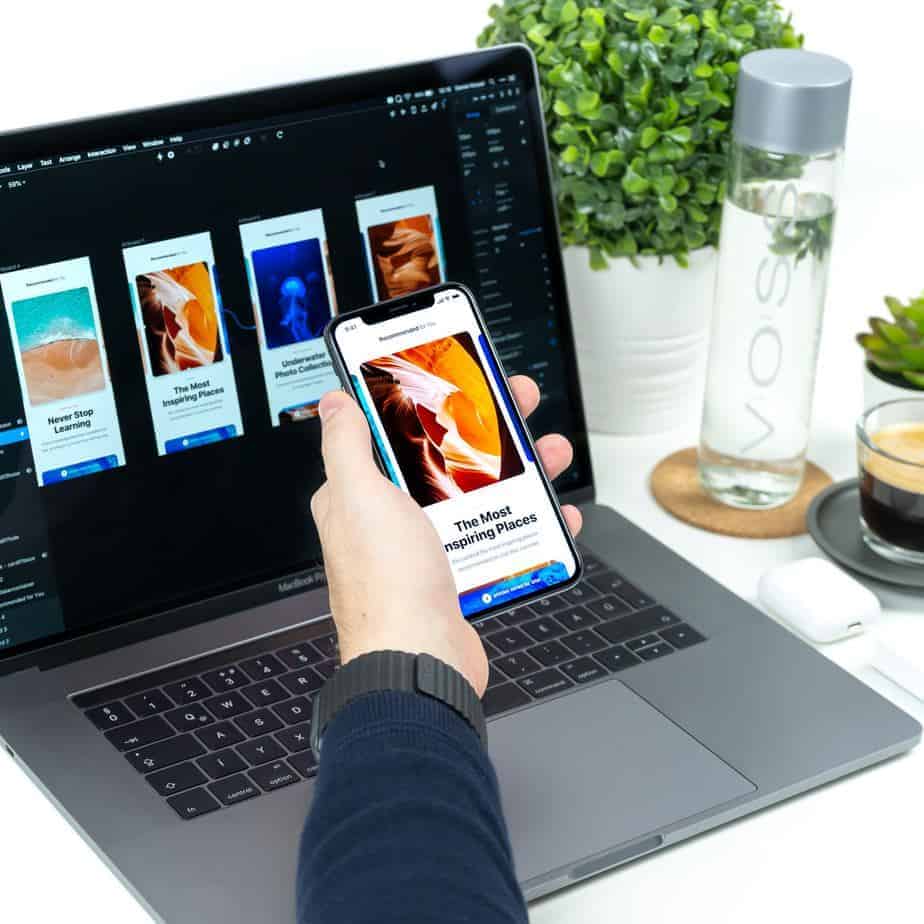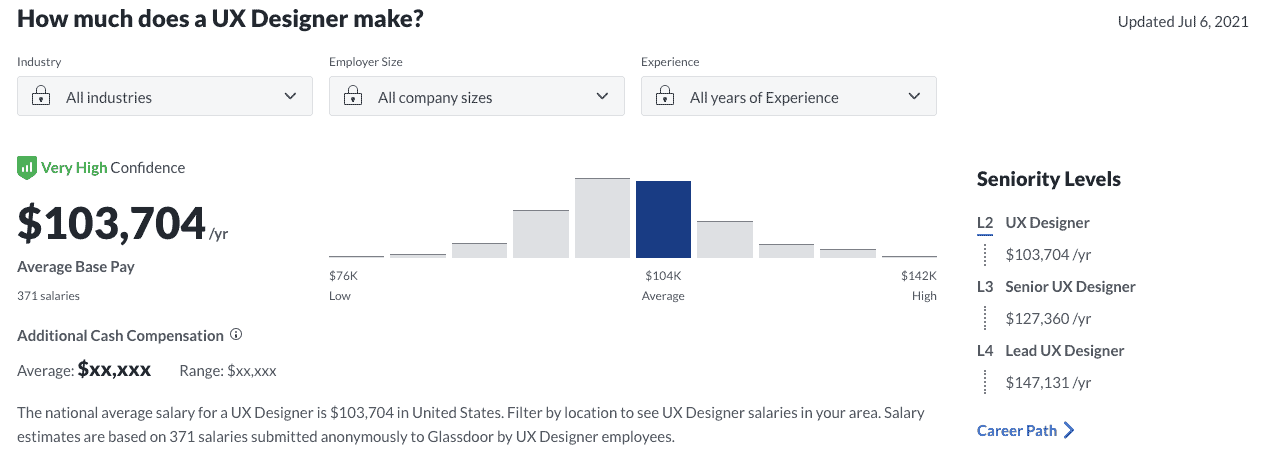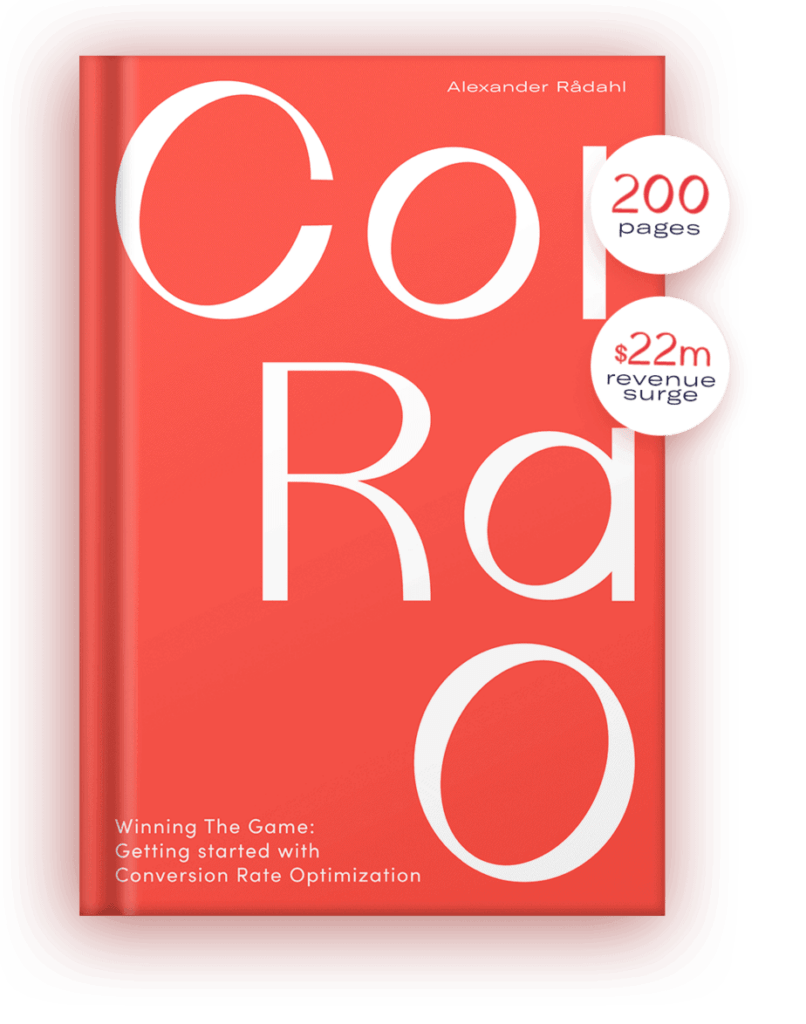Graphic design and UX design are both creative fields, but they work differently. Graphic designers tend to be perceived as more artistic, while UX designers have their finger on the pulse of what people want most. This is why there was a 289% increase in demand for them over graphic designers with only 3%.
A reason for this gap might be that graphic designers create an aesthetic to attract people, while UX designers focus on the user experience of a product or service by making it easy to use. This requires more technical knowledge than graphic design, because you have to learn how people interact with software and other products to make your designs effective for them, including understanding branding strategies, marketing campaigns, coding languages like HTML or CSS, etc. Graphic designers can develop their skills over time as they continue their education in UX Design, as long as they are willing to spend the time and effort to acquire those new skills.
In this article, I will examine the differences between graphic design and UX design, what type of designer you might be if your interests lie on one side or the other, and how we can make this jump.
To the dismay of many, UX Design and Graphic Design are inherently different. In recent years, however, companies have been expecting their UX designers to do everything from concept development to finished, polished sketches — which is not how it works.
There are three prominent roles in a design process:
UX designers are responsible for the experience with an application, as the audience interacts with a product.

In addition to data analysis, they should have logic and reasoning skills. Wireframes serve as one of their many essential design steps that will shape what they produce at every stage along the way — from testing it on your family members to ultimately creating something unique that you can use! As a UX designer, you can play an integral role in the development of new products. Together with designers and developers, you will create innovative designs that are both functional and aesthetic. After your design has been completed, launch it to the world and assess how effective it is to solve problems for end-users or increase conversion rates on eCommerce sites!
There is often the expectation that a UX designer keeps the business in mind throughout the process and, more often, knows how to do the entire UX process.
However, the core responsibilities of a UX designer can be broken down like this:
Graphic designers are artists who use colors, typography, and imagery to create visual designs. They often work in the advertising industry due to their focus on branding and marketing.

A graphic designer will design visual communication through hand or software like Photoshop, Illustrator, or InDesign, by choosing suggestive or soft color schemes, type fonts, illustrations, etc. Graphic designers are usually the first step in any marketing project, as they create logos and images to help brands stand out.
In addition to marketing, the work of a graphic designer can be witnessed in every area where communication is essential. Graphic designers are the minds behind most everyday materials, including flyers, posters, and business cards.
They also play an essential role in the works of UX designers, as they design the visuals for how an app or website works.
Graphic designers are usually trained in colleges and universities, where they learn about business communication and marketing campaigns, typography, color theory, and much more. It is essential to mention that there are graphic designers in advertising agencies and many freelancers who work from home on their terms.

Graphic design is a task that requires understanding aesthetics and the ability to create visually appealing designs. It takes significant time to sketch ideas on paper, perfect them in Photoshop or Illustrator, and finally turn them into professional work ready for printing. The skills needed are varied, but they can usually be learned by following courses or tutorials online.
UI designers, or a User Interface designer, work closely with the UX designer to create the visual design for the user to move from the point of engagement to some sort of the desired completion.

UI designers also focus on usability and practicality in visual design whenever possible. UI designers are judged not only on how visually appealing their design is, but also on whether it can be navigated smoothly and fits within the branding guidelines of whichever organization commissions them. UI design is sometimes called user interface or UX design, but we need to stop confusing the two terms once and for all. UX designers are responsible for determining how users will use their products, while UI designers are responsible for determining what these products will look like once it’s a finished product.
UX design is the process, while UI designers are accountable for the product’s visual elements and interactive properties.
User experience refers to mapping out the journey, which can be significant work. User interface (UI) is then used to add points of interactivity to enrich this experience.
A graphic designer has more leeway than a UI designer because they create graphics that will be used in print materials, illustrations, or posters. UI designers have more restrictions on graphics, as they are designing interactive screens that will need to lead users through a specific path. UI designers need to work on constricted wireframes, fonts, and colors. UI Designers can also be responsible for wireframing and prototyping their designs, while Graphic Designers create the design feel of a company or project.
I often observe people confuse the role of a UI designer, where they say they are responsible for how users interact with their software, website, or app. I couldn’t disagree more! But it is not uncommon for UX designers to know about interface design (though there are differences in knowledge). It all boils down to roles — if you work together as both UX and UI designers, everyone should do what they do best: creating a brilliant product.
It is always refreshing to encounter UI designers who are willing and able to work with UX designers. I have seen many teams operate independently, which is a shame because both types of designers bring something unique and crucial to both the team and the end-user experience.
As a graphic designer, you might think about your next step (maybe why you’re reading this article). But have you thought about UI design? You will find that the leap from one to the other will not seem as daunting — after all, it is much of the same work and can act as an intermediate step on your journey between graphic design and UX!
I have talked a lot about the different roles of graphic designers, UI designers, and UX designers. But I can’t stress enough that these roles have different definitions in other countries. As I mentioned in one of my earlier articles:
UX designers can do so many jobs. In Norway, as a UX designer, I have to conduct workshops, help clients better understand their ideas, create prototypes, test prototypes with people, and make high-fidelity sketches ready for delivery.
Starting out, I would recommend doing some proper research (maybe you’ll even find out if you enjoy it or not) on what the local job market expects of you in the different roles and what type of education is tailored to them. This might give you a better understanding of which role best fits your skills!

And if we look more closely at the labor market facts, it doesn’t look like the demand for UX designers will disappear in the future. LinkedIn mentioned in 2020 that UX Design is one of the top five skills in demand this year, and Glassdoor added it to its list of 50 best jobs in 2021. And if that wasn’t enough to convince you, the job board website Hired.com said in its latest report that demand for UX skills in the UK has increased by 289%.
UX design can be a rewarding and lucrative career, but it is crucial to start with the proper education.
The best UX designers combine graphic design skills with knowledge of user behavior to create interfaces that are both aesthetically pleasing for users and effective in driving sales. A degree or certification from a university or other accredited online course will help you start your journey as a talented UX designer!
UX design is a newer form of graphic design, with its principles focusing on users and data. This approach was developed in response to technological advances, in which UX designers expand their skills from visual language to new heights. Graphic designers can cross over to become UX designers if they are interested in further exploring their talents. It will allow companies that use them to remain competitive by providing easy-to-use interfaces that enable customers to have faster access to platforms, including desktop or mobile devices.

As we have mentioned earlier, UX designers are heavy on theory and methodology in their daily work and research. So there is a considerable gap from that visual way of working to one based more on the understanding of the user. Still, simultaneously, you as a graphic designer understand how different colors make people feel other things and understand the effect of your design choices.
User Experience Design is an art created to solve problems with the design of products for real people. UX designers need both empathy and strategy to look at the situation and needs of a user, determine how to achieve them, and simultaneously consider broader business objectives. A UX designer will have diverse skills that help them achieve their work effectively. They may find the right impression of your product through carefully designed user journeys and interactions, while he is aware when it may be time for changes that better fit what users want from his service or product.
UX designers are responsible for the UX, which is what a user sees and how they interact with it. You could learn information architecture and then create wireframes so that users can find things quickly and easily. You could research customer needs and analyze the competition to ensure that their designs meet your goals, or perform usability tests on prototypes to make them easy to use.
Some skills that I use in my daily work as a UX designer:
… And there are many nuances to consider, depending on what direction you want the user experience design to go. But this should be a good starting point for building out your skills as a UX designer!
UX design is a field with no coding required, but with programmers earning 6-figure salaries and programmers being the #1 most in-demand job in America today, you may wonder whether it’s worth learning to code.

I know how to code, and although I haven’t done it for a while, this ability has helped me figure out the bigger picture of developing all the products I’ve been working on. This is not something any employer would expect from you, but this skill could help you move forward as a UX designer and possibly as a product manager!
I have touched upon this in my earlier article “Is UX Design for Me? How to know if you’ll be happy as a User Experience Designer”. I will add it here again:
According to Glassdoor, the average salary range for a UX Designer is around $103k per year. The lower end of what UX Designers earn starts at $80k, depending on where they live (the higher wage typically goes to those who make it in California, USA). When we look at what Graphic Designers earn, Glassdoor can tell us that the average salary is around $49k per. Year for the US, and that is almost half the salary of someone starting as a UX Designer! So even if the course or school you’re looking at to get a degree in UX design is a little expensive, you can see that it will likely pay off in the long run.

UX Designers and Graphic Designers are different designers, with UX being the first step in any design process. The UX designer will work on wireframes to determine how an app or website works before it goes live. A UX Designer must have logic and reasoning skills, along with data analysis, for this type of position. Graphic designers play an integral role in marketing campaigns through their ability to create visually appealing designs, which can come from sketching ideas onto paper to designing websites.

UX designers need both empathy and strategy to look at a user’s situation, determine how they can achieve it, and consider broader business objectives. UX design is not only what you see on the screen, but also interactions with an interface.
If you look at the differences in roles, it can seem daunting to make a career change. But don’t forget: You already understand consumers through your design skills, and you can use it to get a head start in the world of UX Design. And I have to add that UX Design is a rewarding career, and I’m delighted I chose to go down this path.

I’m currently working on my book on the subject of CRO and UX, and how they complete each other for a better user experience. This book is for the aspiring UX designer who wants to learn more about CRO and help them in their everyday design work. It’s packed with real-life examples, case studies from Silicon Valley companies, and tips on applying this knowledge to your projects.
You can sign up for my newsletter here to get the latest updates and a heads-up when it comes out for pre-order on Amazon.
You can also find me on Twitter, Instagram, and LinkedIn to continue the discussion! (or even email me)